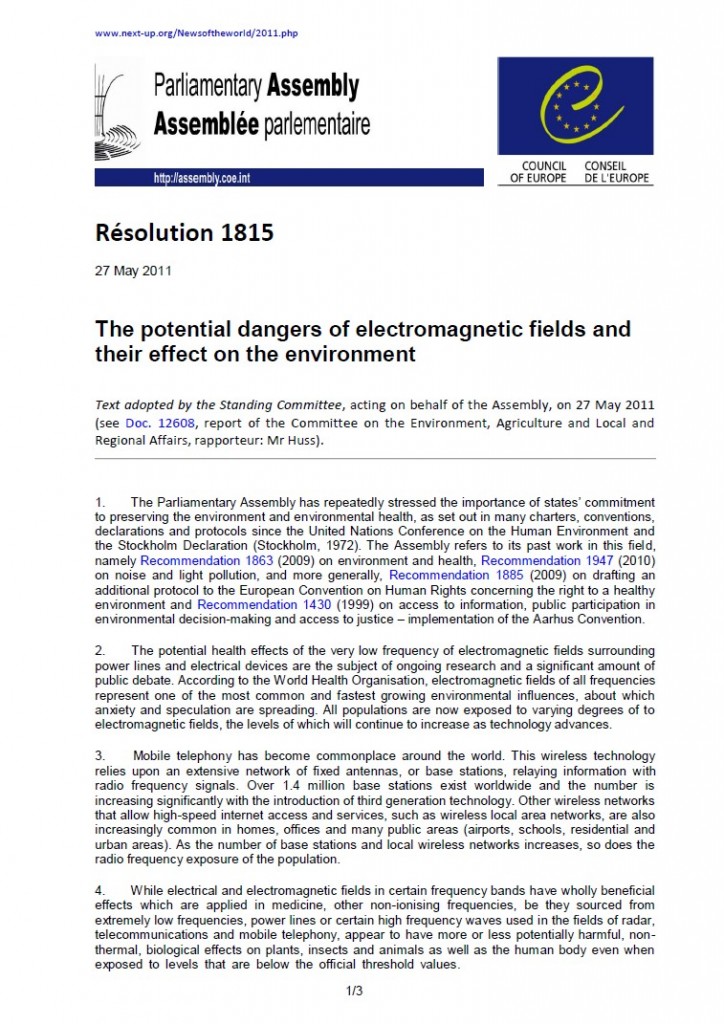Portada del sitio > Fauna > POSIBLES EFECTOS DE LAS ONDAS ELECTROMAGNÉTICAS UTILIZADAS EN LA TELEFONÍA (...)
Ardeola 51(2), 2004, 477-490
POSIBLES EFECTOS DE LAS ONDAS ELECTROMAGNÉTICAS UTILIZADAS EN LA TELEFONÍA INALÁMBRICA SOBRE LOS SERES VIVOS
Miércoles 2 de agosto de 2006 · 4476 lecturas
SUMMARY.-Possible effects of the electromagnetic waves used in the wireless telephony on wildlife. A bibliographical
revision of the possible effects of the waves used in the wireless telephony on animals is presented
and its impact on wild birds is analyzed. After exposing the technical characteristics and the legal situation
of this new technology, the scientific discoveries that could have interest for the study of their effects
on the wild fauna are revised. Basing us on the current scientific knowledge the foregone possible consequences
for the birds is commented, keeping in mind the deterioration of some ecosystems that they occupy.
It is recommended to consider the electromagnetic contamination in the microwaves range like a possible factor
of decline of some populations in risk, especially of the urban birds, subjected at more radiation levels. Effects
on birds in rural and protected areas that have phone masts near cannot be rejected. Keeping in mind that
birds are excellent bioindicators, we stick out the importance of carrying out studies that value the effects of
this new type of contamination and some methodologies that could be useful for this purpose are presented.
Key words: bioelectromagnetism, bioindicators, electromagnetic contamination, microwaves, non thermal
effects, radiofrequencies, phone masts, wild birds.
RESUMEN.-Posibles efectos de las ondas electromagnéticas utilizadas en la telefonía inalámbrica sobre
los seres vivos. Se presenta una revisión bibliográfica sobre los efectos de las ondas utilizadas en la telefonía
inalámbrica en los seres vivos y se analiza su posible impacto sobre las aves silvestres. Tras exponer
las características técnicas y la situación legal de esta nueva tecnología se revisan los hallazgos científicos
que pudieran tener interés para el estudio de sus efectos sobre la fauna silvestre. Basándonos en los conocimientos
científicos actuales se comentan las posibles consecuencias para las aves, teniendo en cuenta el deterioro
reciente de algunos ecosistemas que ocupan. Se recomienda considerar la contaminación electromagnética
en el rango de las microondas como un posible factor de declive de algunas poblaciones de riesgo,
especialmente de las aves urbanas, expuestas a mayores niveles de radiación. Tampoco pueden descartarse
efectos sobre las aves en áreas rurales o protegidas que cuentan con instalaciones próximas. Teniendo en
cuenta que las aves pueden ser excelentes bioindicadores, se resalta la importancia de realizar estudios que
valoren los efectos de este nuevo tipo de contaminación y se proponen algunas metodologías que se podrían
emplear.
Palabras clave: Antenas de telefonía, aves silvestres, bioelectromagnetismo, bioindicadores, contaminación
electromagnética, efectos no térmicos, microondas, radiofrecuencias.







